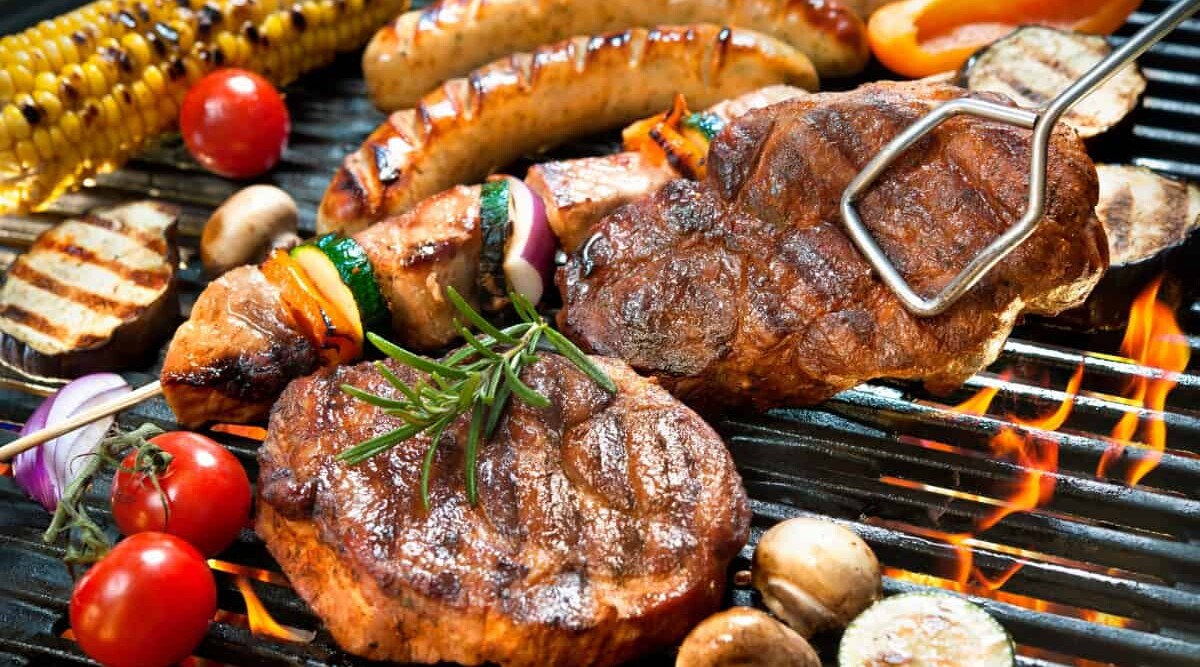
In this article, we go over the most common mistakes in grilling, how to avoid them, and show you how to level up your grilling game and get better results.
Most people only grill occasionally, in the summer, or at least when the weather is nice. Because of this, many home cooks aren’t as experienced at grilling as they are as cooking in their kitchen.
This leads to many home cooks making simple and avoidable errors when grilling, preventing them from getting the best food from their grills.
Today we’re going to fix that!
We’ve already compiled a list of great and actionable grilling tips, today we add to that a dive into the grilling mistakes you can also easily avoid.
Jump to:
The Four Main Categories of Mistakes
You’ll find that grilling mistakes have four main categories. They are the fire, the meat, the grilling process, and serving.
I’m going to dive into each of these four areas, exposing the errors in each one and briefly discuss four critical points for each:
- What is the mistake?
- Why it’s a mistake?
- How to avoid it.
- How to correct it if it happens.
Grilling Mistakes With Fire
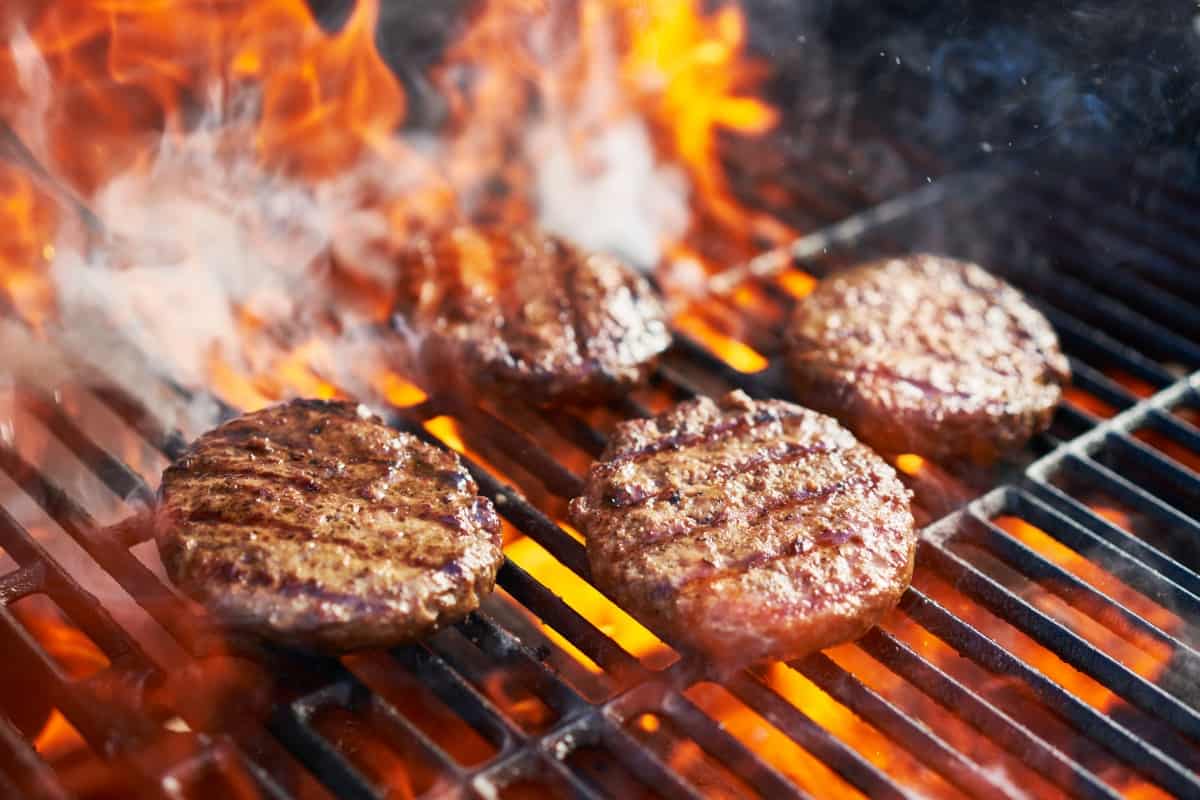
Grilling is both art and science. It centers around the temperatures and timing.
All recipes tell you to cook at a fixed temperature for a specified duration. To do this, you must master the fire.
Here are common mistakes people make when starting and controlling the fires in their grills.
Grill Temperature is Too High
One big mistake grillers make is in having the heat too high. If it is, the outside of the meat will char and burn before the insides have had any chance to reach the ideal temperature. Have you heard of the term, “Pittsburgh Black & Blue?”
It’s a particular style of blue steak, where the steak cooked so that the outside is burned, but the inside is still cool and raw. (Legend has it that Pittsburgh steelworkers would cook their lunch steaks on super-heated foundry equipment that tended to burn the outside so fast, the inside didn’t cook.) Most people don’t like their meat prepared this way. Having the proper temperature makes the difference.
There are three ways to avoid high heat conditions. Let the coals burn down, dampen down the air vents, or build a smaller fire with less fuel from the start.
If you already have a blast furnace going, take the meat off until you get to the proper temperature. Move the grill grate higher away from the heat, shut down the air vents and close the lid for a few minutes to suffocate the fire
Grill Temperature is Too Low
When the grill is not hot enough, you risk not cooking your food properly.
To grill hot dogs, burgers or kebabs requires high heat, or you won’t have those beautiful little grill marks or smoky brown crust when meat cooks on the grill. In the worst case, you risk serving undercooked meat and giving someone food poisoning.
Add more fuel to start your fire. If it’s time to cook, but your fire is too small, get another chimney of charcoal going right away and pour it on top of the other coals. You can use a propane torch, electric fire starter, or even a hairdryer to force more air into the fire and get it going.
Coals Spread Out Too Soon
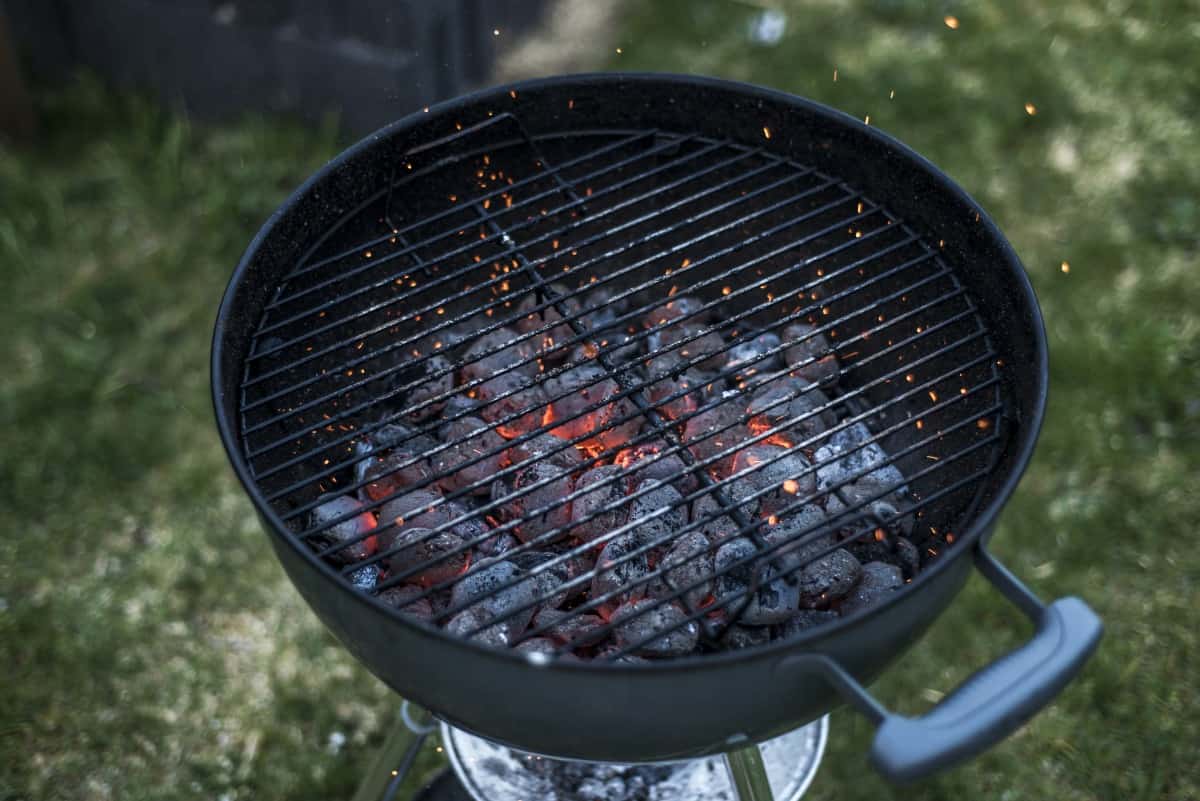
Spreading your coals too soon will leave you with a fire that’s too small and low temperature. It will take much longer for the coals to light each other and get to the right temperature.
Be sure the coals are red-hot and glowing brightly before spreading them around. If you did spread them too soon, add more oxygen with a fan and open the vents. You can also add more pre-lit fuel on top or use a torch to light unburned portions to accelerate the fire.
Not Using Vents Properly
Like a pilot using power to adjust his altitude, you use your vents to adjust the heat of your grill by controlling the airflow.
When the vents are wide open, your fire will rage. If they are shut or blocked by an ash build-up, your fire will only smolder. Vent control is essential if you cook with the lid closed because the fire quickly consumes all the oxygen inside the grill.
Unless you know the best settings for the vents, start with them wide open when you start the fire and then make gradual adjustments to give the right amount of oxygen.
With a little practice and patience, you will understand how the air vents affect the amount of heat your fire puts out. Each time you change the setting of the vents, wait about 10 minutes to see what impact it has on the fire before making another change.
We have a more in-depth discussion on this in our guide to using charcoal grills. Go check it out!
Grilling Too Soon
You always want to grill over glowing coals, not open flames. If you cook over high flames, it can burn your food and not cook it. The food gets coated with an unpleasant smoke residue particularly if you’re using wood or briquettes that have not ashed over and are still smoking heavily.
Also, if your grill grates are not up to temperature, the meat may stick to them, creating a mess and making your meat look unappetizing.
Make sure if there are no flames, just glowing coals before you start grilling. That way you’ll know the grill is up to temperature.
Using Lighter Fluid or PreSoaked Match Light Fuel
Using petroleum products to light your charcoal or briquettes is one of the biggest no-nos of grilling and smoking. That includes using the match light products on the market.
Yes, they are convenient because you can light it with just one match. Unfortunately, the chemical smell does not dissipate even after the briquettes are glowing. The taste and smell get into your food, so avoid match light and starter fluids.
If match light fuel is your only choice, be sure that all the coals have ash all over and no flames. And, if you must use lighter fluid, only use it on a few pieces to get the rest of the briquettes going. Once those coals are glowing, pile on fresh fuel and wait for the fire to spread. It will take longer, but your food will taste much better.
As per our guide on lighting a charcoal grill, the best way to start a fire is to use a chimney and avoid lighter fluid altogether. You can start any size grill with only one match and two pieces of newspaper. Don’t believe it? Watch how a chimney works.
Another way is to use an electric fire starter or a combination Fire starter and blower like the Looflighter. No chemicals needed.
Running Out of Fuel
I used to joke around, saying the “E” on the car’s gas gauge means “Enough.” But just imagine if there is a mishap on the road, and you’re stuck in traffic. What do you think will happen? You’re going to get stranded. Don’t carry that “E” attitude when grilling, or you’re going to run out of fuel in the middle of cooking.
Running out of fuel is a serious mistake in planning. Whether you use charcoal, briquettes or propane, always plan on having spare fuel. If you use gas, here are four ways of telling how much you have left in the tank. However, the best way to know is to use an inline gauge.
Sometimes the unexpected happens, and your spare tank is empty, or the charcoal is wet. What do you do? If you can, go to the store immediately. If that’s not possible, then your second option is to play boy scout and build a fire using wood. (Never use scrap lumber treated with any wood preservative or paint!)
If you can’t make a fire, then your only alternative is the stove and oven. Hopefully, you have an iron skillet for just such an occasion.
Grilling Mistakes With the Meat
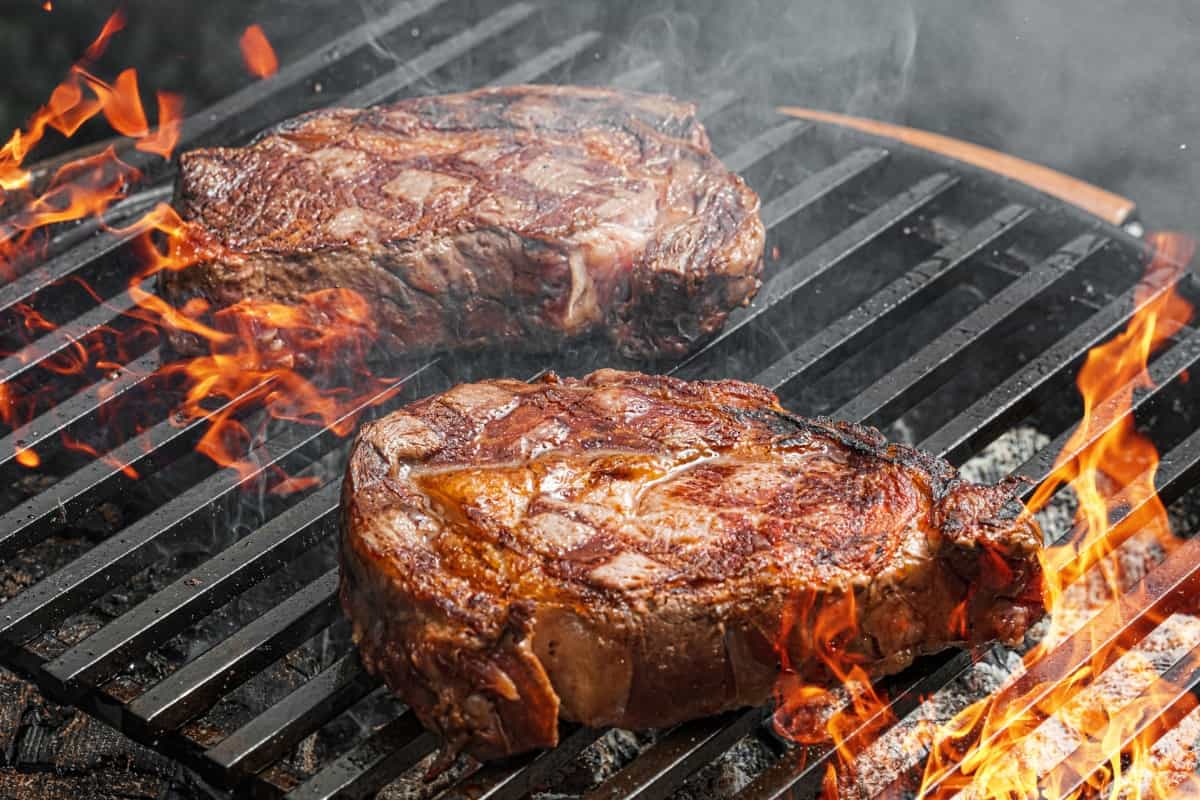
Over or Under Seasoning
Improperly seasoned meat can ruin your meal. Is there anything more dull and tasteless than a piece of chicken breast without salt or pepper? Or how about a nice steak that it is so overloaded with steak seasoning, you can’t taste the meat?
Seasoning should enhance the flavor of whatever food you serve. From good old salt and pepper to your great-grandfather’s blue-ribbon barbecue sauce, seasonings should be the sidekick and not the star.
Know when to apply dry rubs, brines, sauces and marinades. Using sauces or rubs with sugar in them can burn if you’re grilling over high heat. If you put a dry rub on too soon, the salt will draw out all the moisture from the meat. You need to time your seasonings properly for best results.
For brines and marinades, 2 to 12 hours is best. Dry seasonings like rubs and herbs only need an hour or so. For dry rubs, you can add water, oil or mustard to “glue” the rub in place.
If you think that you overdid it with the salt and spices, just rinse off with cold water before you grill. And, in case you under seasoned, serve it with a good barbecue sauce to cover up your mistake.
The Meat is Too Cold
Although we have articles on how to grill burgers from frozen, and how to grill a frozen steak, it’s not always the best advice, particularly if you don’t know what you’re doing.
When you pull the meat right out of the refrigerator and slap it on the grill, two things will happen. The meat will cool off the grill grates, and it will probably stick.
It will take longer for the heat in the metal grates to recover. By the time they’re hot enough to make grill marks, the meat will overcook.
To avoid this problem, take the meat out of the refrigerator an hour before you grill it. If that’s not possible, consider preheating the meat in a 300 ⁰F (149 ⁰C) oven for 7 to 10 minutes before grilling.
Ignoring Basic Food Safety
Food safety is a concern anytime you deal with proteins like meat, poultry, or fish. Unless you are going to grill within an hour, all protein needs to be kept refrigerated at 39⁰F (3.8⁰C) or less.
Basic hygiene and sanitation rules always apply. Wash your hands and utensils. Never place cooked meat onto the same platter as the raw meat without washing it first.
When buying meat, it should be red, not dark brown, and there should be no smell or slimy feel.
The bottom line with food safety, WHEN IN DOUBT, THROW IT OUT.
The USDA has all kinds of food safety education and materials on its website. There’s no excuse to serve poor quality or tainted food.
Grilling Mistakes During Cooking
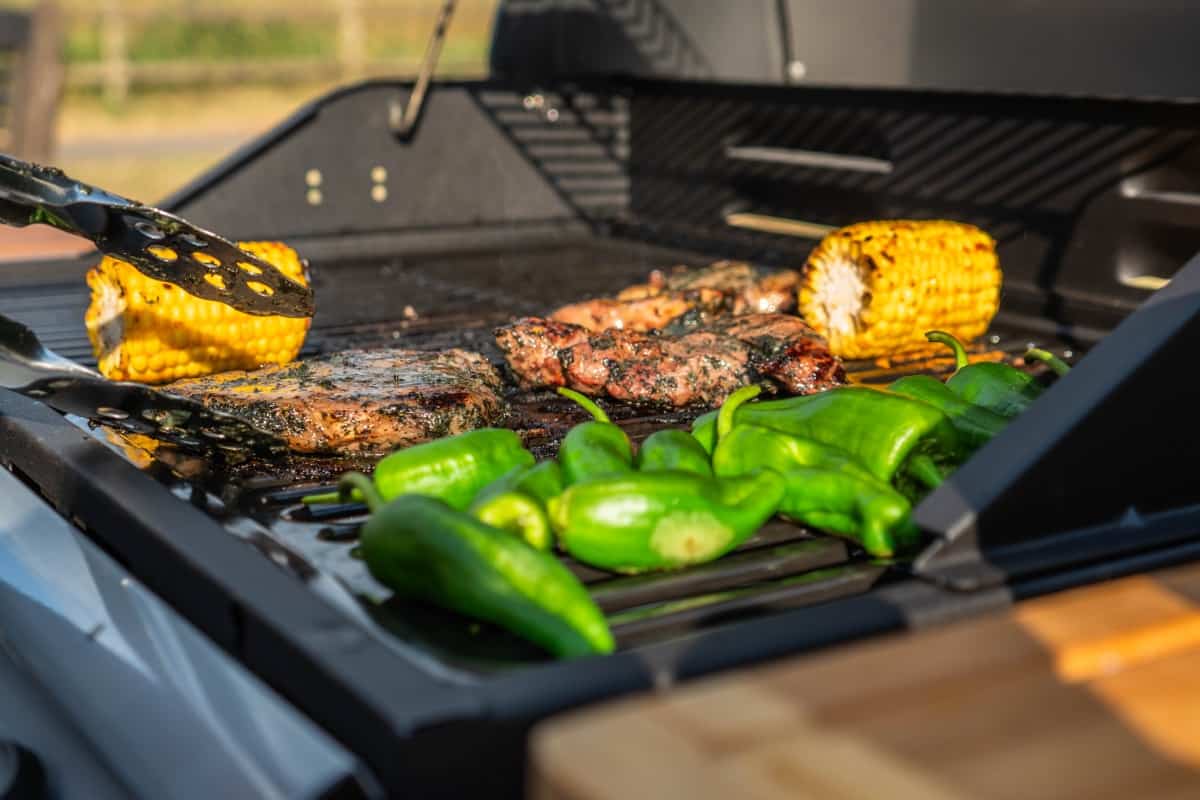
Cooking Too Long
Overcooked food is a mistake that’s easy to avoid. The one rule of grilling is never to walk away when food is cooking. As soon as you do, you’ll have a flare up that will burn your food.
Monitor your grill at all-times. Have a second set of eyes if you must leave or use a Bluetooth enabled thermometer to alert you to temperature spikes. A kitchen timer is also a valuable tool if you’re easily distracted.
Cooking Too Short
While not as serious as overcooking, undercooking can make you look like an amateur. It means suffering everyone’s disappointment as you make an extra trip to the grill with everyone’s steaks.
However, when it comes to undercooked ground meat, poultry or pork, the consequences can be more severe if someone gets food poisoning.
Always cook ground beef to a minimum of 160 °F (71.1 °C) and 165 °F (73.9 °C) for poultry. Use this Safe Minimum Internal Temperature Chart to find other safe cooking temperatures.
Grill Not Preheated
If you try to cook on a grill that isn’t hot, chances are your food will overcook trying to get it to brown or have grill marks. Another thing is that your meat will stick to a cold grill. That’s bad news if you have a beautiful piece of tenderloin and parts of it stick to the grill as you try and pry it loose to turn it.
Allow time for the fire and the grill grates to get hot enough, so the meat sizzles as soon as you put it on. If you lay the meat on and find out the grill is too cool, immediately remove the meat and wait for the grill to get hot.
Grill Not Cleaned
It’s OK to burn and brush off food from the last barbecue. It’s not OK to cook on top of old burnt bits. Burned food looks and tastes terrible. Always brush your grill with a quality grill brush or scraper first.
If you forget and the burned bits get on your food, you can rinse it off with running water and start over on a clean grill.
Cutting the Meat to Check for Doneness
Cutting into your freshly grilled meat to check for doneness will ruin it. Same goes for poking it with a meat thermometer multiple times. Think of a perfectly cooked steak as if it was your arm. If you cut it open or stab it with a meat probe, you’ll lose lots of “juices.” Don’t do it!
The reason you grill at higher temperatures is to sear the meat and seal in the juices. Also, there is the residual heat that still cooks after you remove the food from the grill. Cutting and probing prematurely will give you a dry piece of meat.
Learn to test for doneness by poking with your finger or by timing.
Pressing Out the Juice
There is no good reason to press the juices out of the meat and burgers with your spatula. If you are concerned about blood, cook them longer. Pressing out the juices will leave you with dry hockey pucks for burgers and shoe leather for steaks. Learn the touch method to check for doneness and try to flip steaks and burgers only one time.
If you’ve already smashed the juice out (accidentally of course) be sure to serve lots of condiments, fresh onions, lettuce, and tomato.
Adding Sauce Too Early
If you add sauce to the meat too early, it will create a carbonized gunky mess on your grill. You want the sugars in the sauce to caramelize, not burn. Sugar caramelizes at 160 °C/320 °F. Use this chart if you’re using other types of sugar in your sauce.
When you need to sauce your meat, do so in the last five to ten minutes of your cook. That way, you won’t have too much of a mess, and the sauce will not have time to burn.
If you already added too much sauce and it burned, try scraping it off and brush a light coat of fresh sauce on top of the meat.
Using the Wrong or Poor Tools
Trying to use tongs to flip loosely packed burgers or a salad fork to flip a steak are recipes for disaster. Using the wrong tool means your food will end up in the fire or on the ground, which is good news for the family dog bad news for your party.
You don’t need to buy top-of-the-line tools, but make sure if they are sturdy enough for the job.
Tongs — Get stainless steel at least 12 inches long, 18 inches are better, to keep your hand out of the flames if you have a big grill.
Spatula — Purchase a spatula long enough and wide enough for grill use. Throw out that little plastic pancake flipper you have in the kitchen drawer. Look for an offset wooden handle to protect your hand.
If you happen to be somewhere and have no choice but to use grandma’s tiny spatula, keep a platter close by so if you drop food, it will go on the platter and not on the ground or into the fire.
Forgetting to Prep
Multitasking is not what you want to do when the steaks are on the grill. Plan ahead. You can finish many easy recipes before the first guest arrives. There’s no excuse for running around like a chicken with your head cut off while the hot dogs go up in flames.
Every successful meal requires preparation and planning. If you’re new to putting on a backyard barbecue, use a checklist and start at least one week ahead. It will give you time to gather the necessary ingredients to make your grill out successful.
If you screwed up and everyone is waiting for you, switch to manager mode. Delegate tasks and make it fun for everyone. People usually ask, “Can I help?” “Yes, you can!” Give them specific tasks, and directions. They’ll have fun, and your party will come together nicely.
Grilling Mistakes When Serving
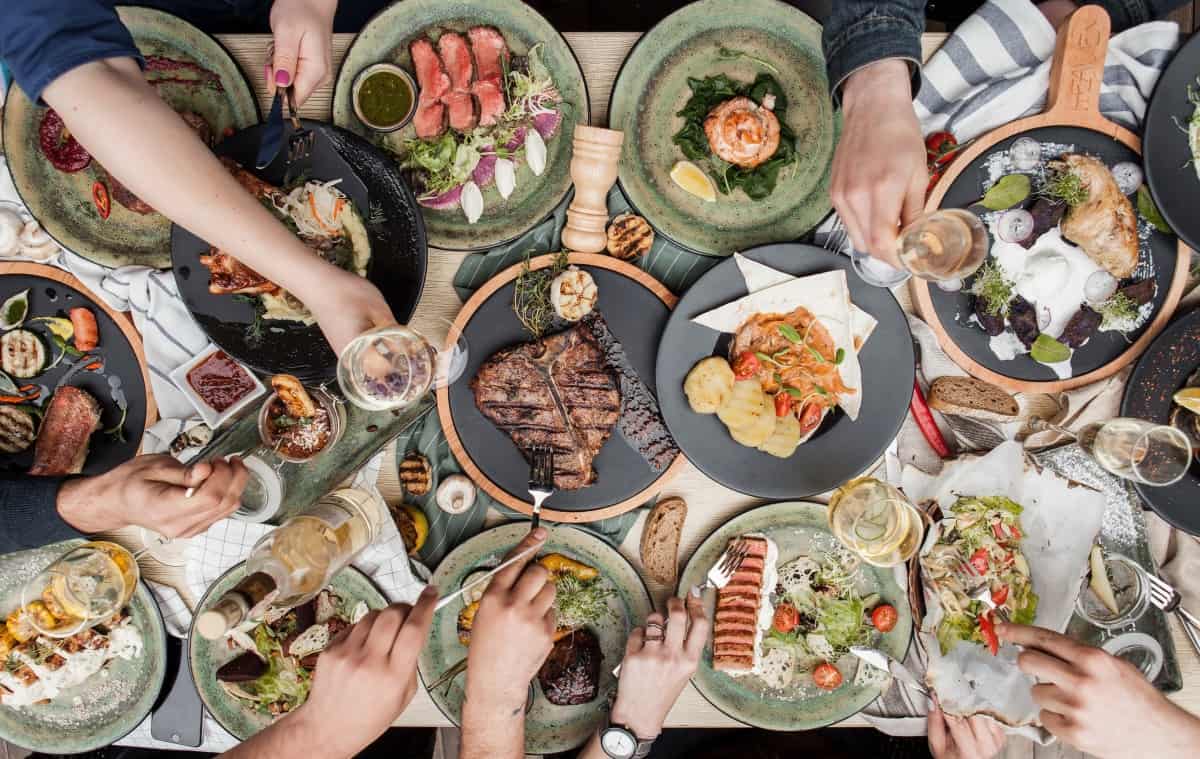
Not Enough Rest Time
As discussed in our guide on how long to rest steaks before serving, Letting any grilled meat rest for ten minutes before cutting it, is just as crucial as cooking it properly.
During the resting process, surface heat is still penetrating towards the center, and the internal temperature can even rise as much as 5 °F (2.7 °C).
Resting can mean the difference between a perfect medium rare and undercooked as the juices are redistributed towards the outside.
If you couldn’t wait and cut into the steak right away, it may be underdone. The juices will run out. All you can do now is cook it a little more to the desired doneness, but you can’t get those tasty juices back.
If you don’t think taking time to let your grilled meat rest is essential, Anthony Bourdain, has a few choice words with you.
Not Enough to Feed Everyone
Not having enough meat to feed your crowd is embarrassing, but it does happen. There are three causes of this kind of “tragic food shortage.”
- An accident. Did you drop the platter, or did the dog grab everything when you turned your back?
- Poor planning. You need to multiply the portion size by the number of people that you expect to buy the right amount of food.
- Unexpected guests. Know your crowd. Do they tend to bring strays to parties? Plan for extra people. Leftovers are always good.
The bottom line here is always expecting the unexpected. Plan to have extra on hand, at least in the freezer to accommodate extra people and avert disaster. We have a guide on how much meat you need per person. Bookmark, use it, and never be short again.
If it’s too late to go back to the store, try and change to a recipe that feeds more people. For example, you can make shish kabobs or satay, stretching your limited meat by adding lots of veggies.
Those were the most common mistakes that happen during grilling.
Next, we’ll talk about mistakes during smoking.
As with grilling, there are four main categories of mistakes. Each type has a list of specific errors and how to avoid them.
Passion and Patience Will Make a Perfect Meal
The big takeaway from this article is to take your time to do each task correctly. A few extra minutes per task doesn’t take much extra time, but you will see and taste the difference in the results of your cook.
Being patient means you will avoid the most common grilling mistakes and be a hero at your next cookout instead of fumbling over everything.
It’s your turn to be a hero by passing this article along to anyone who barbecues. It may help other backyard chefs improve their skills.


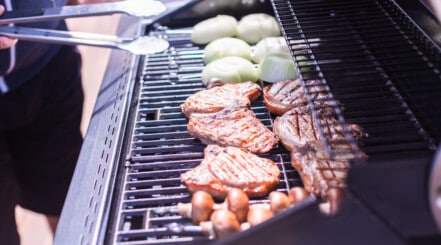
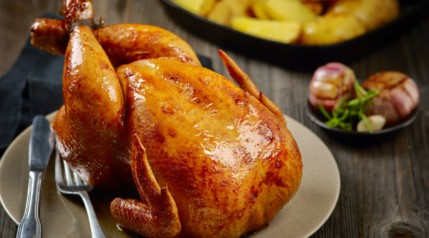

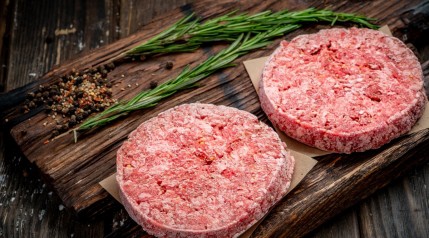
0 Comments